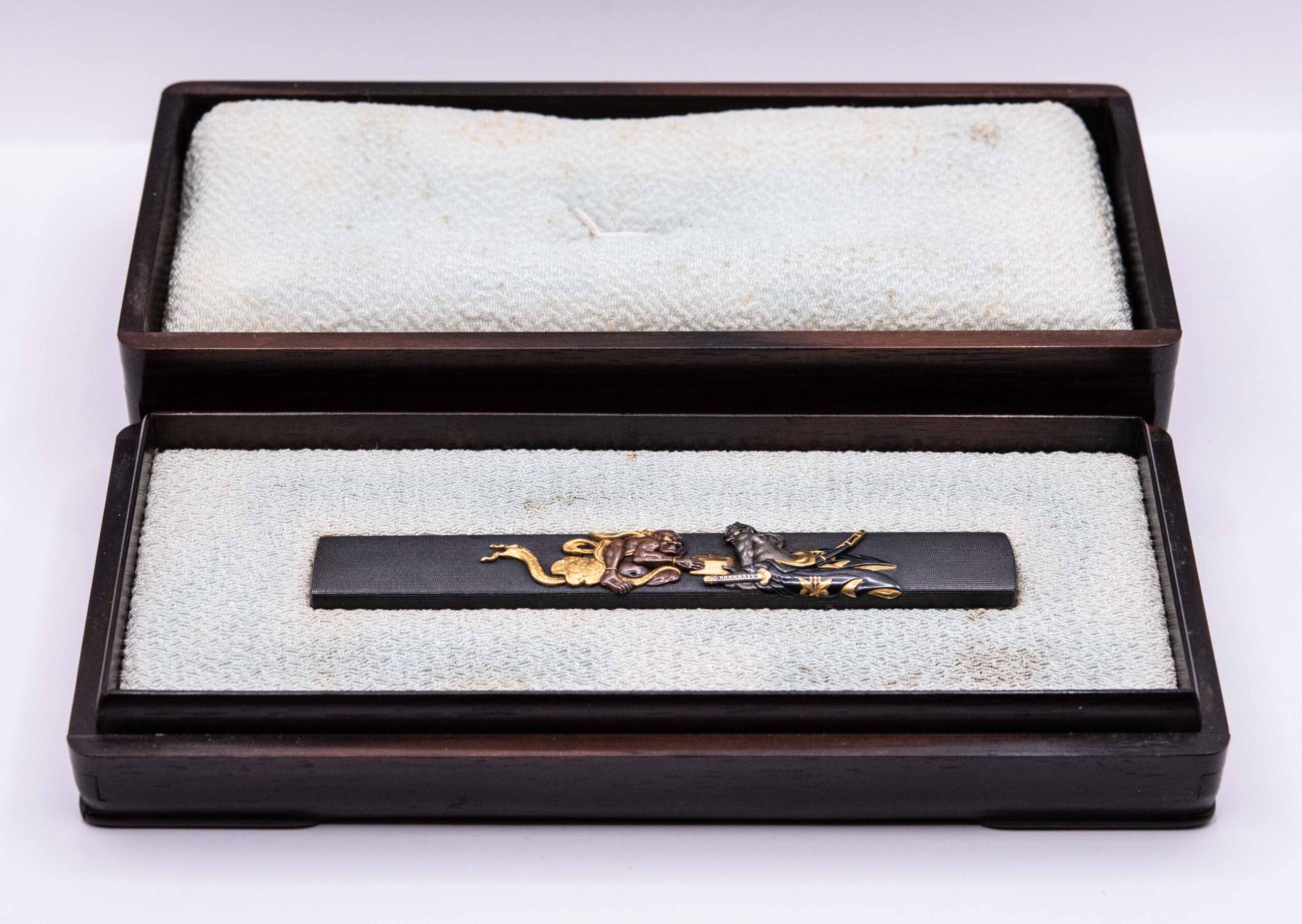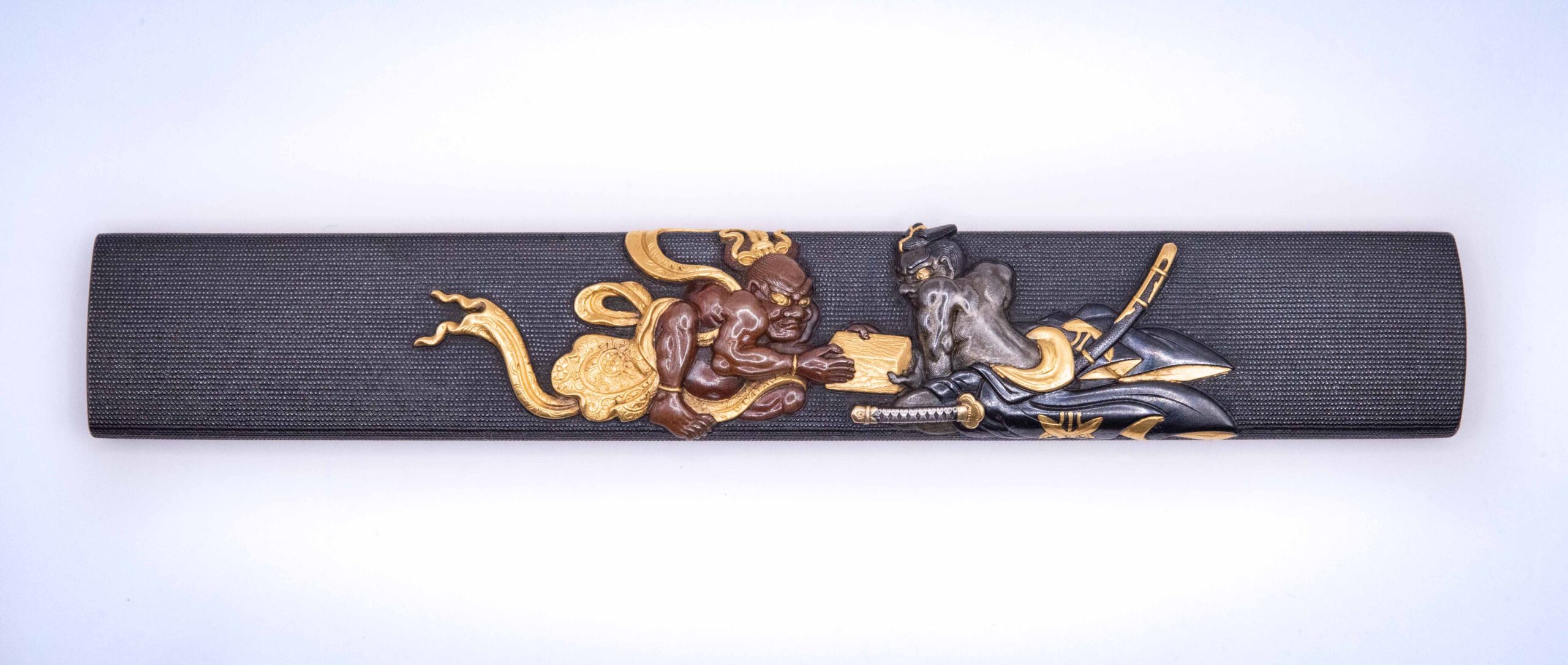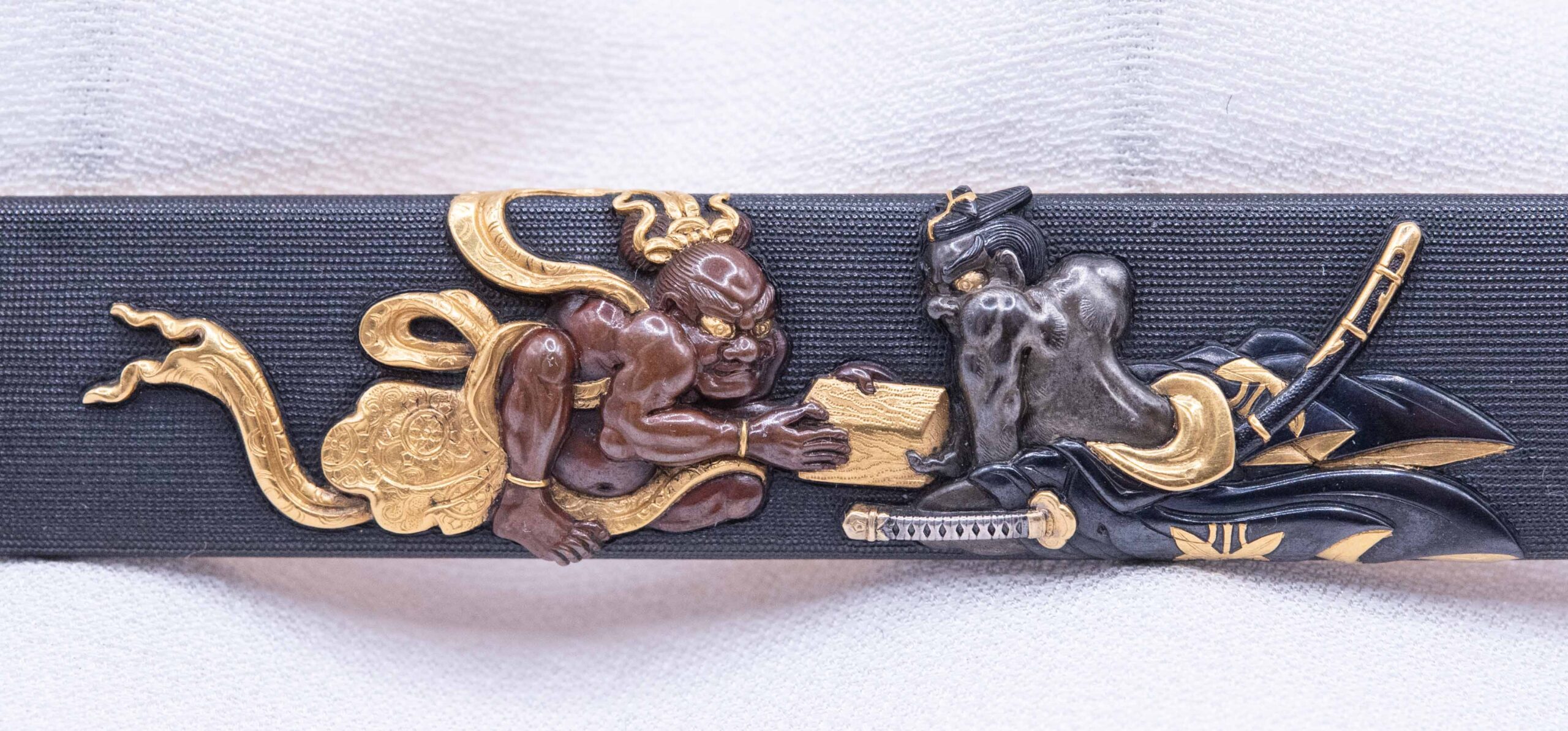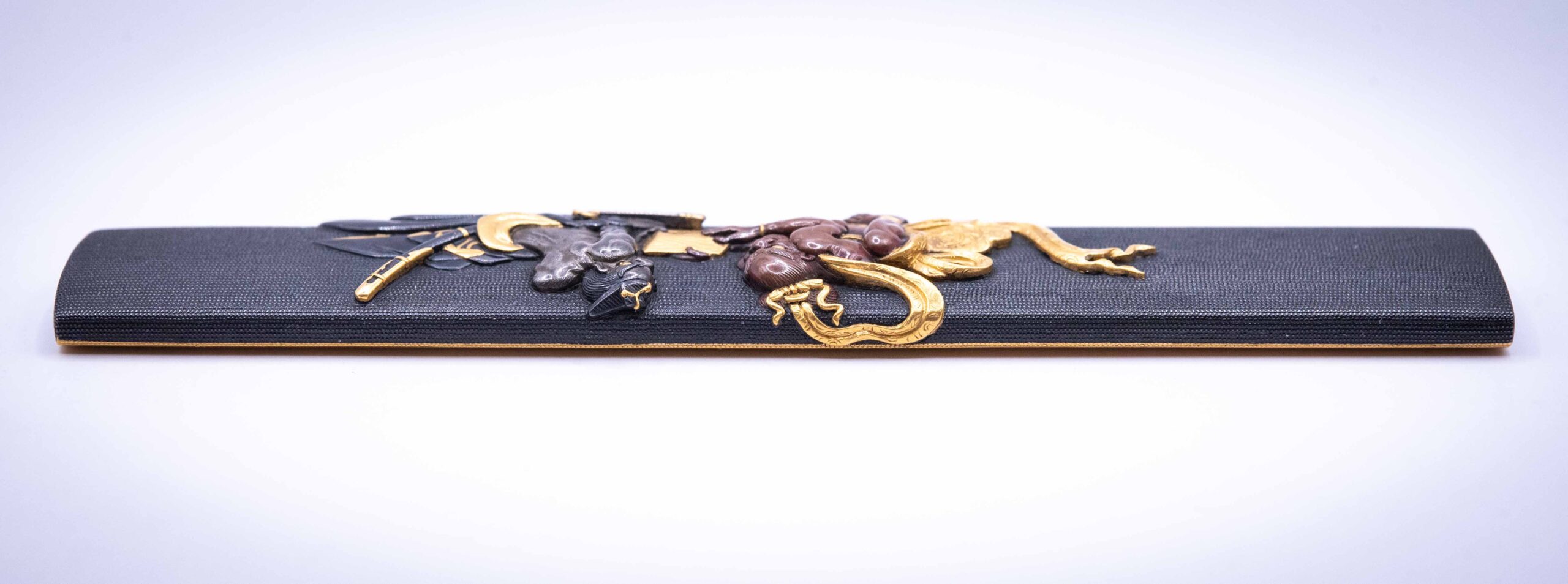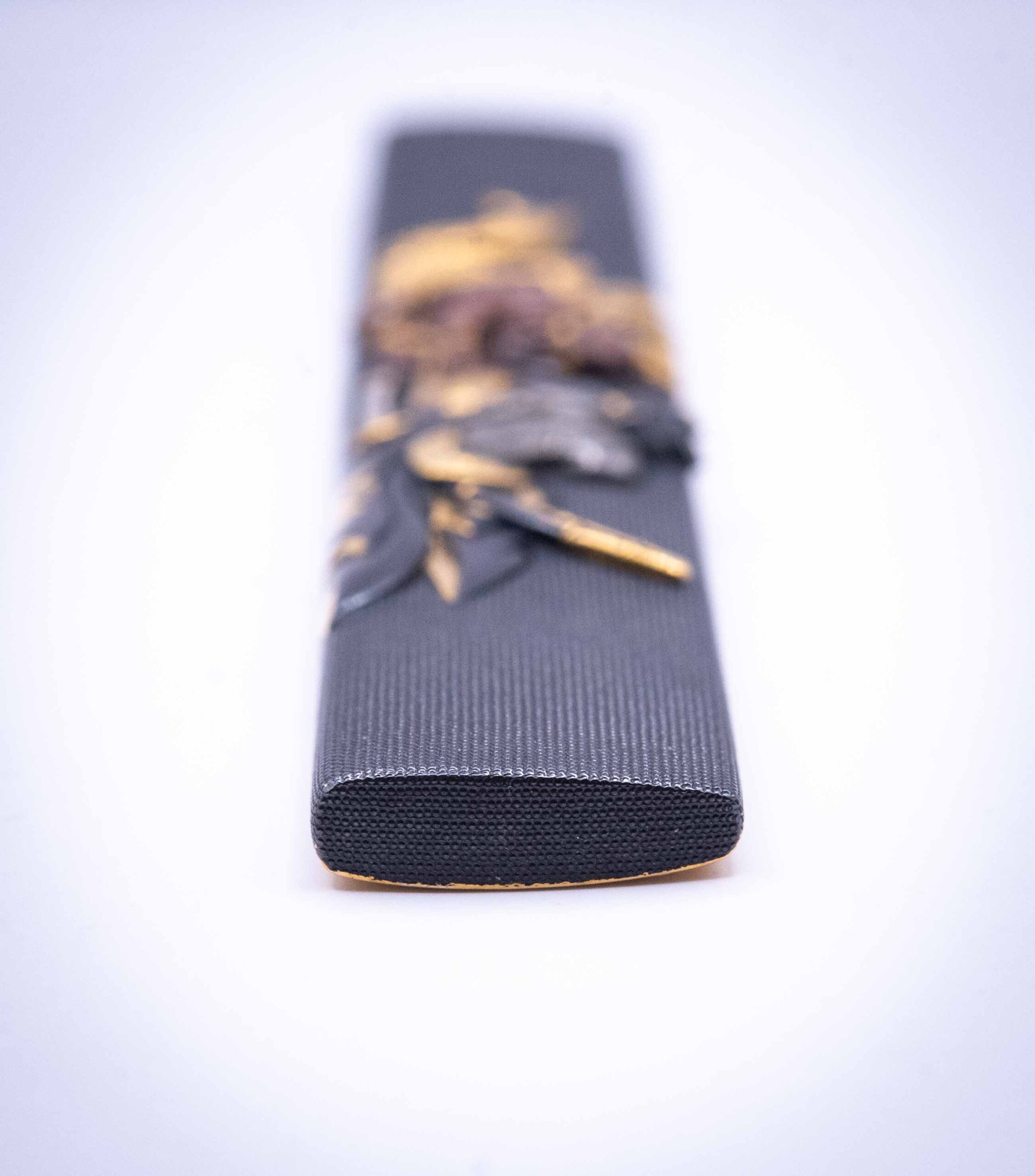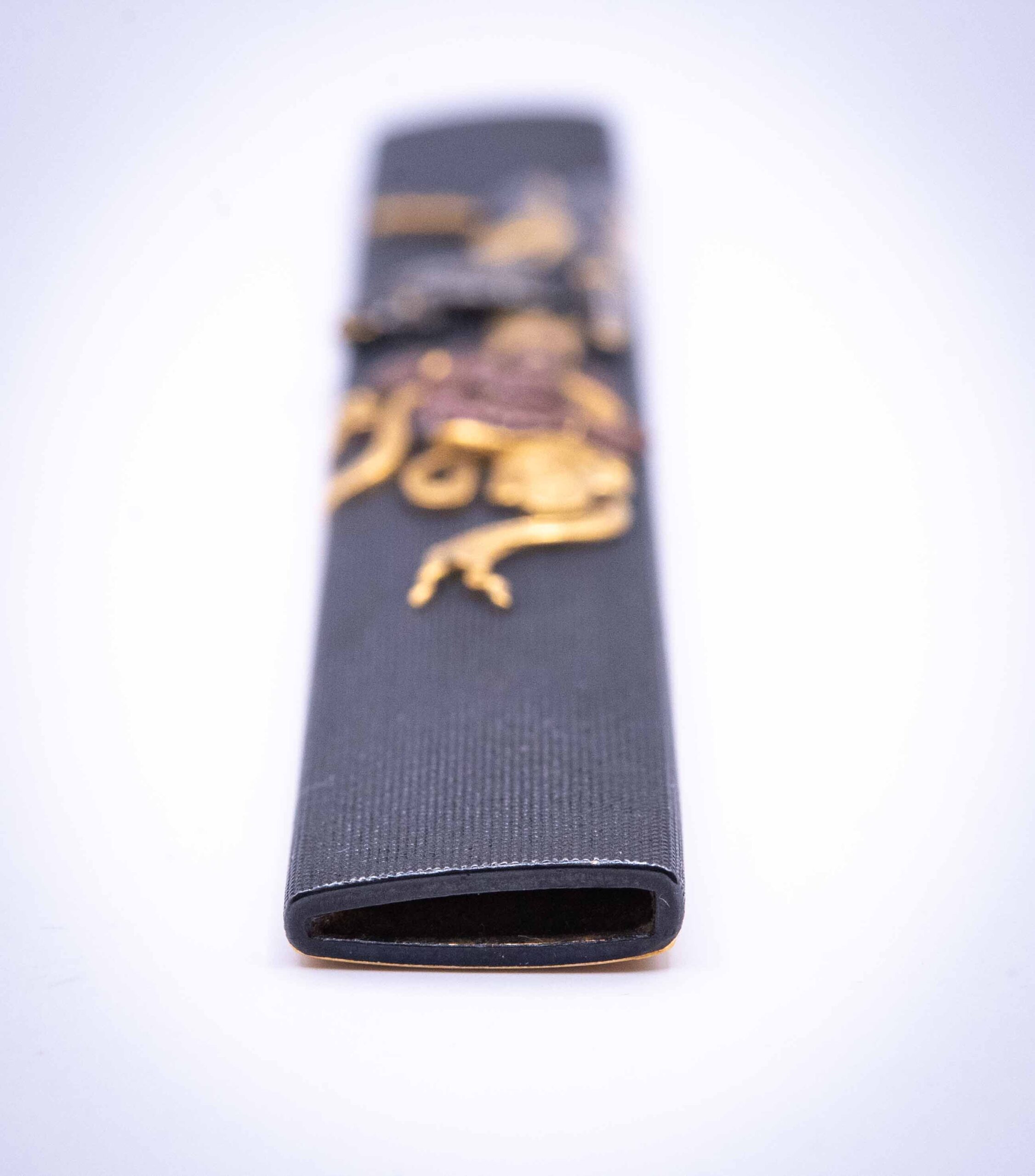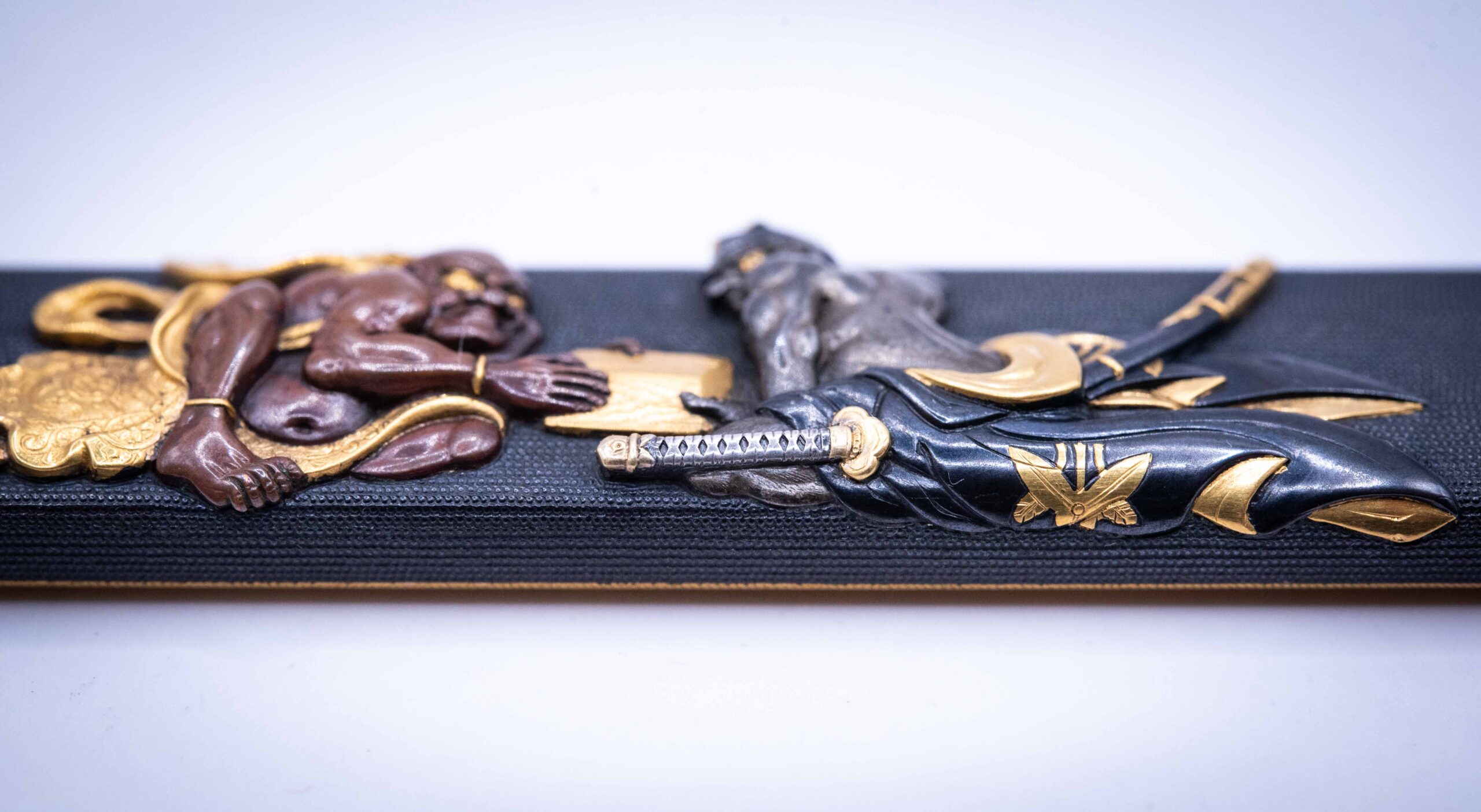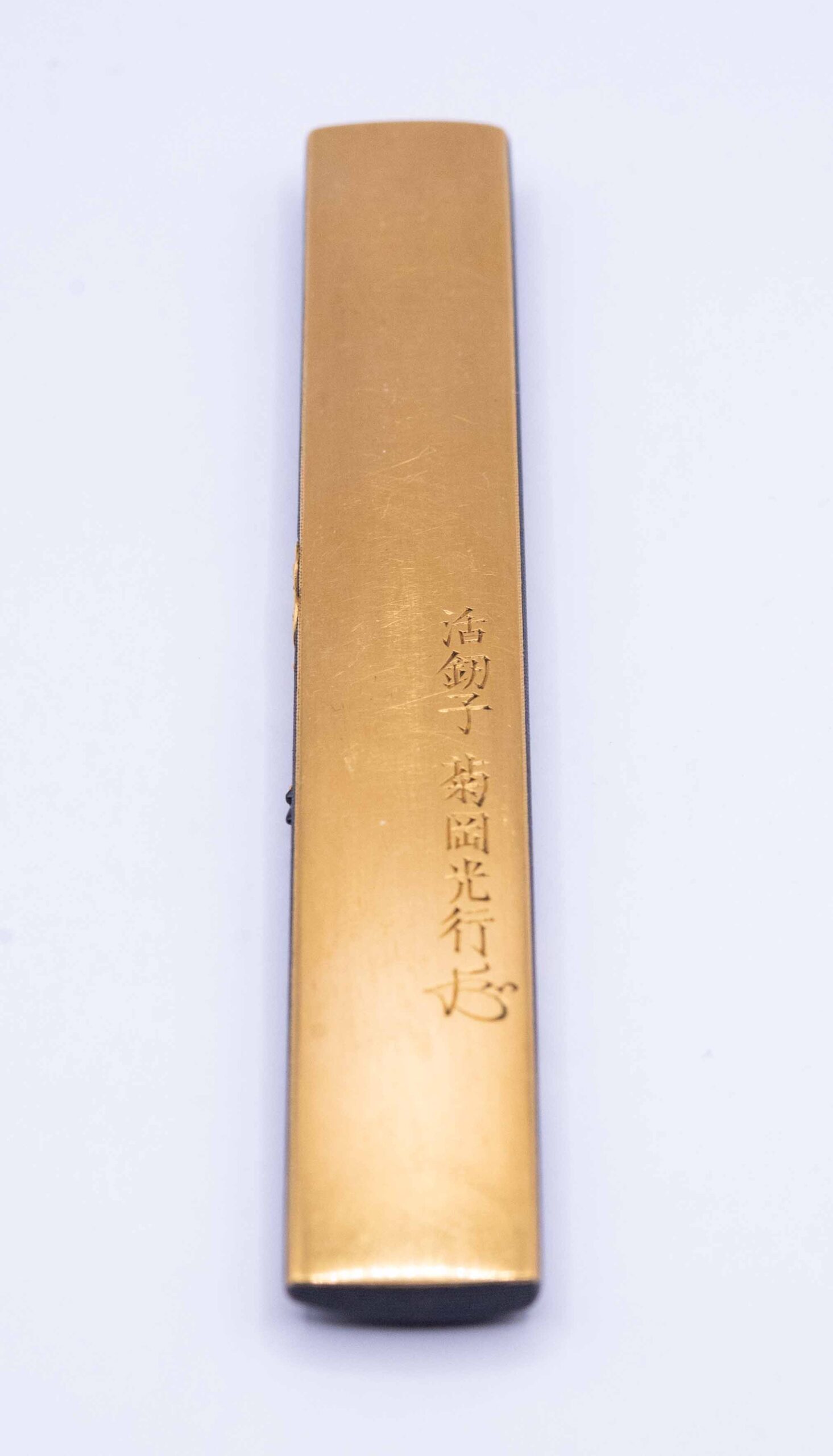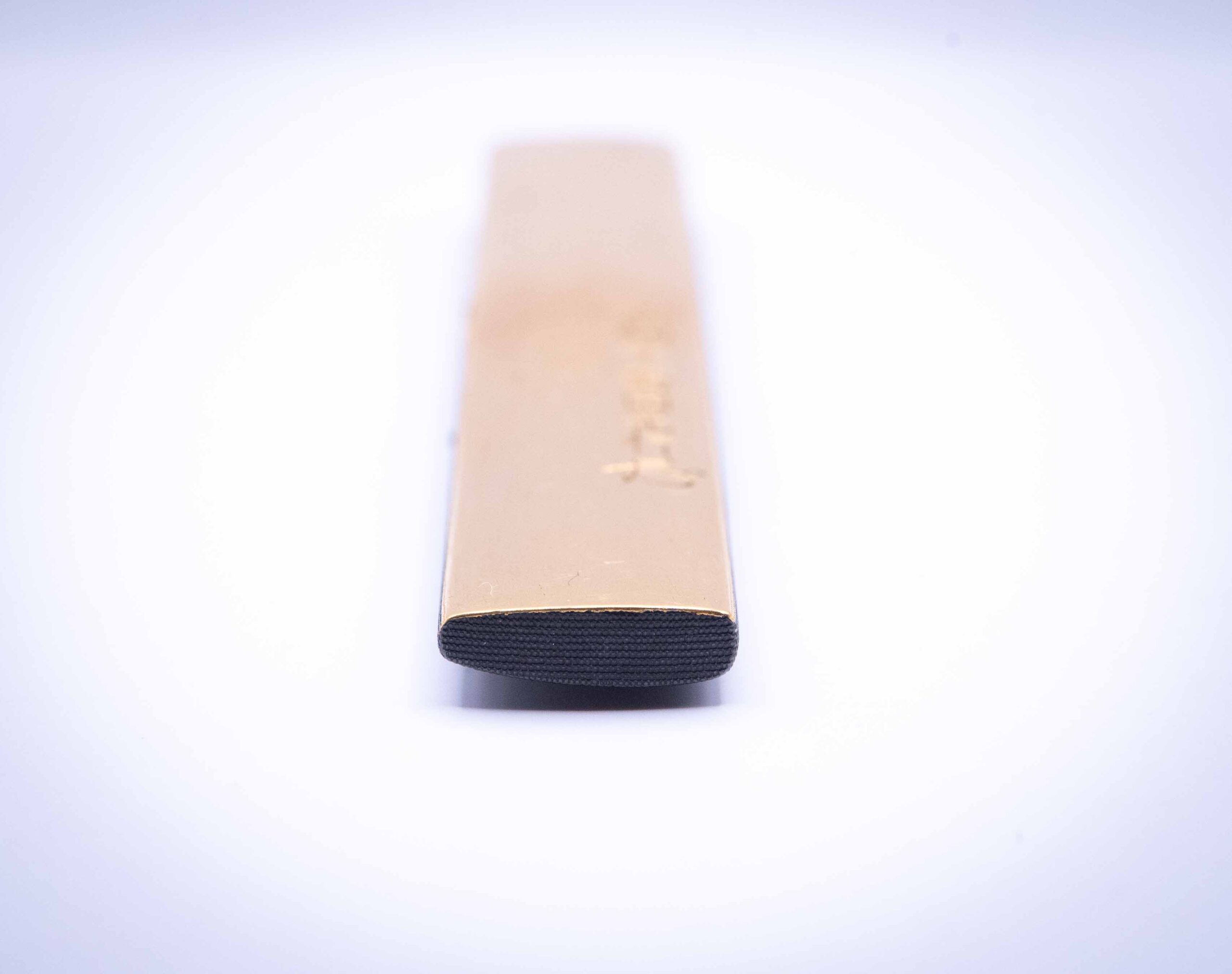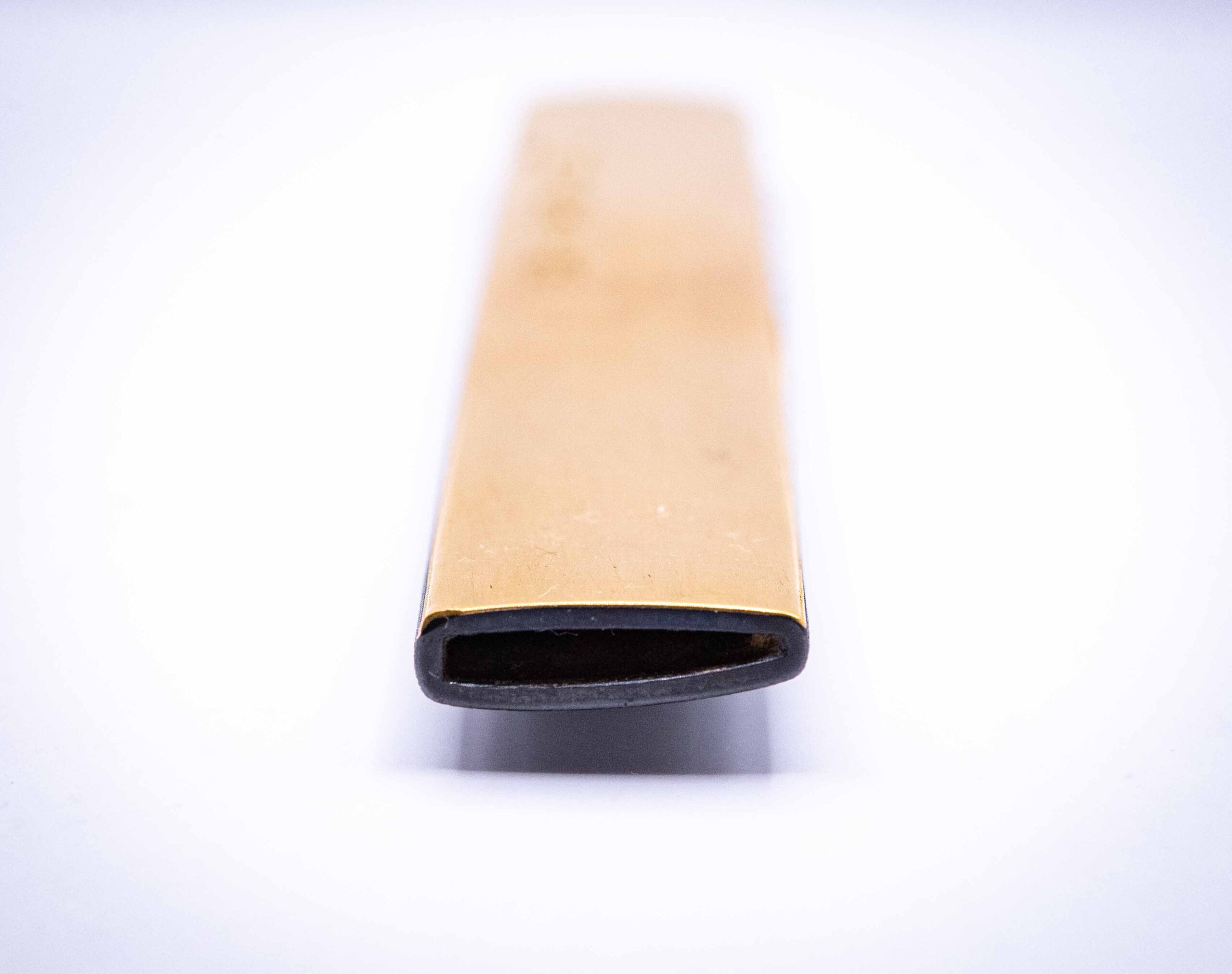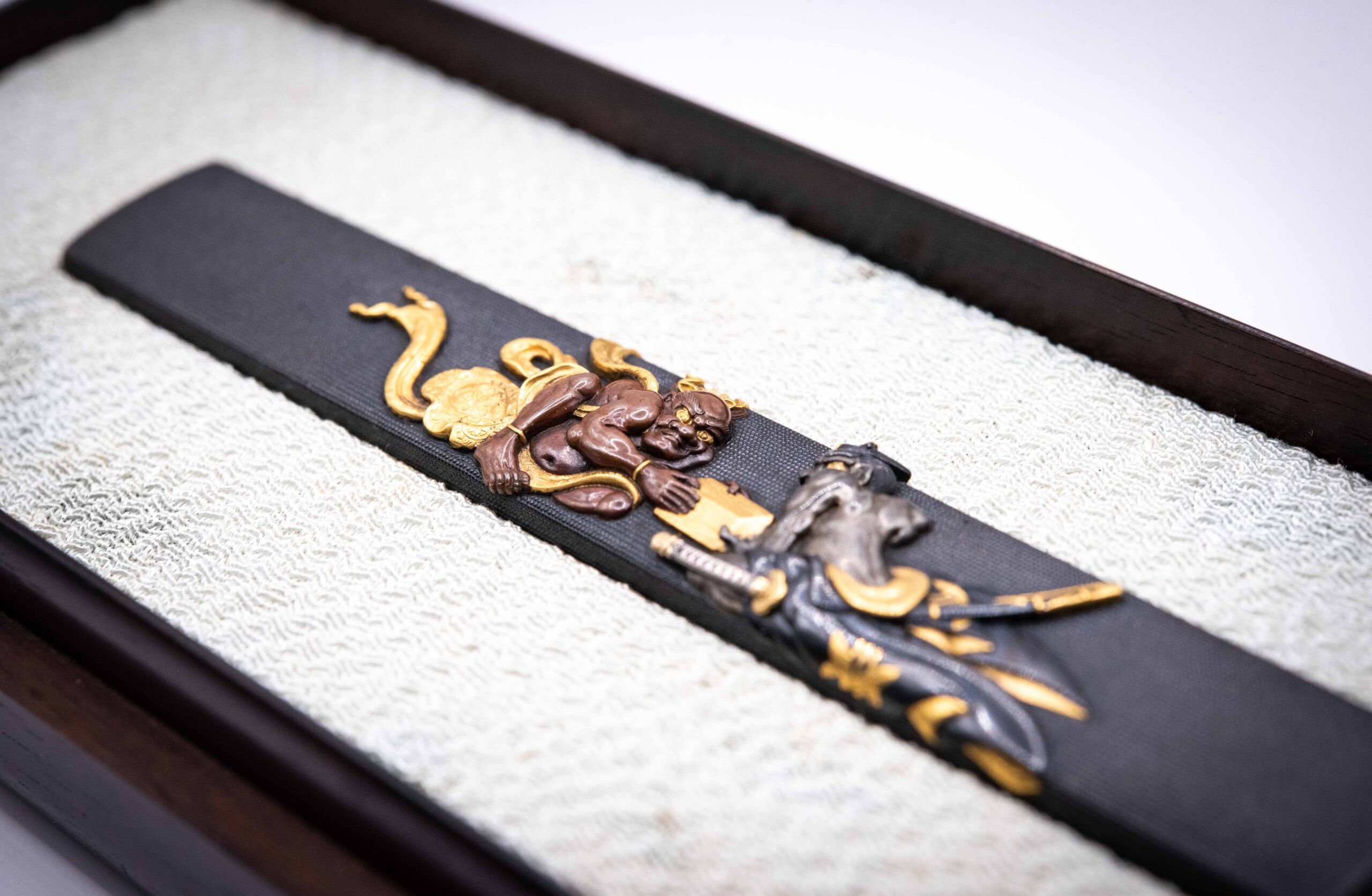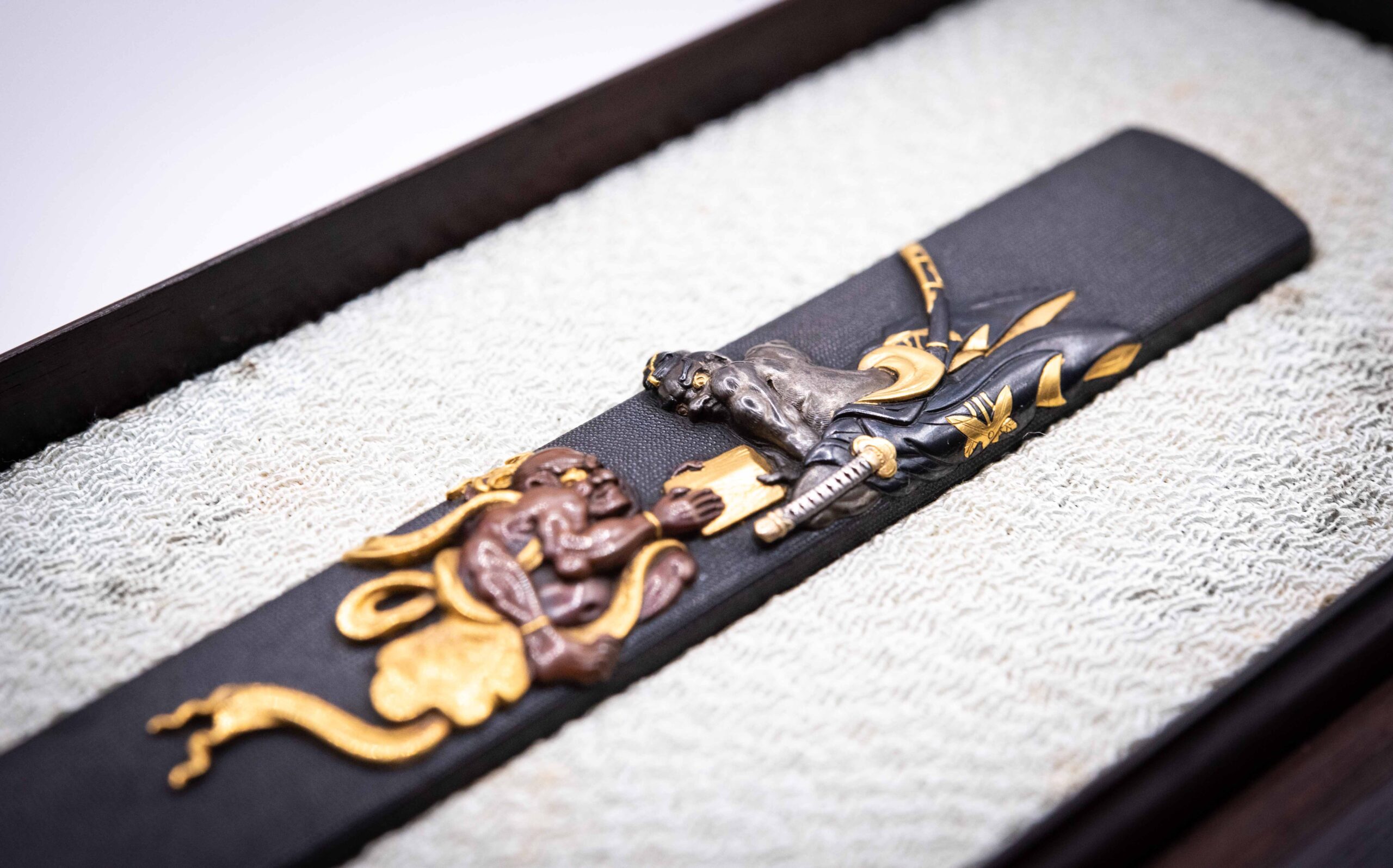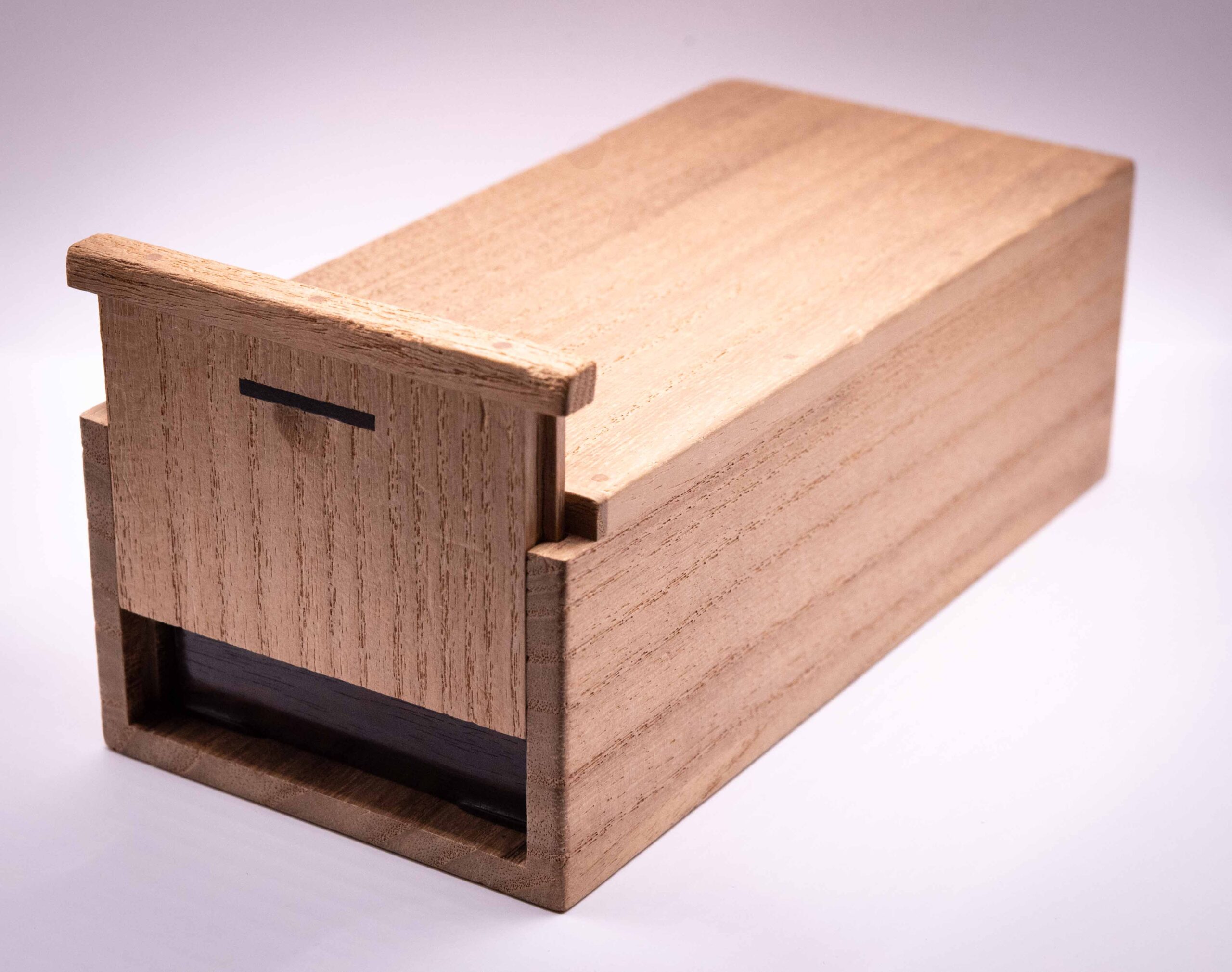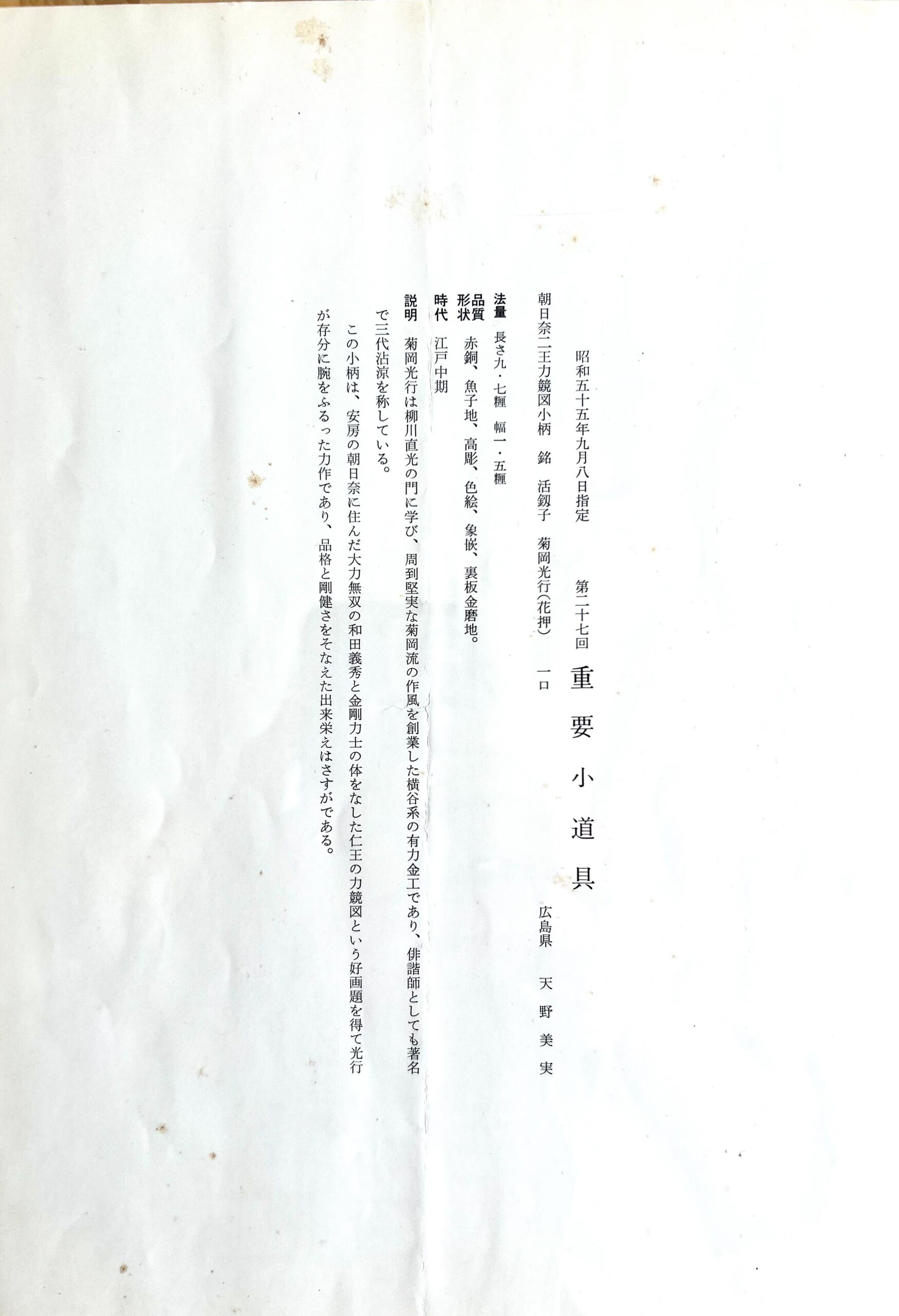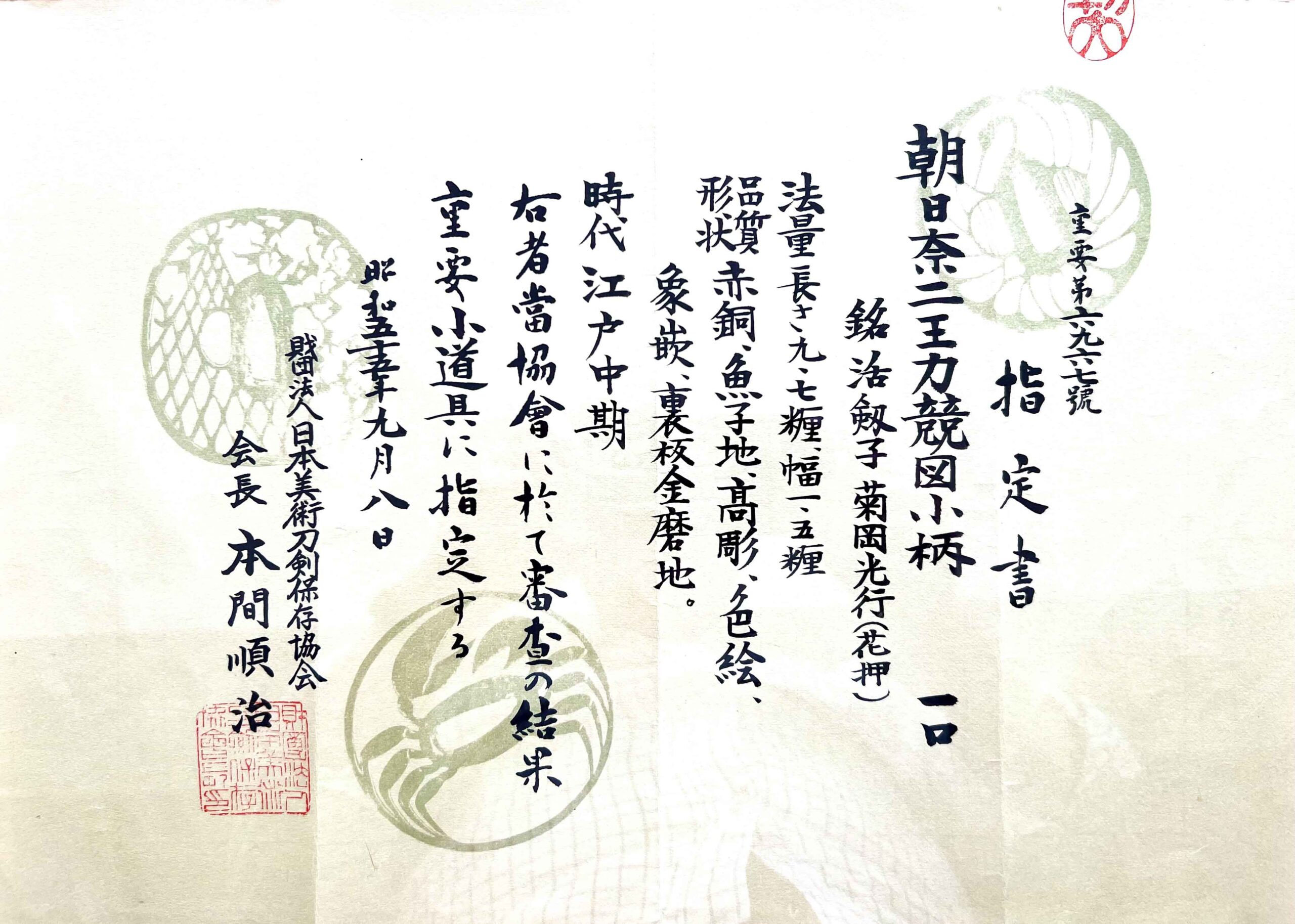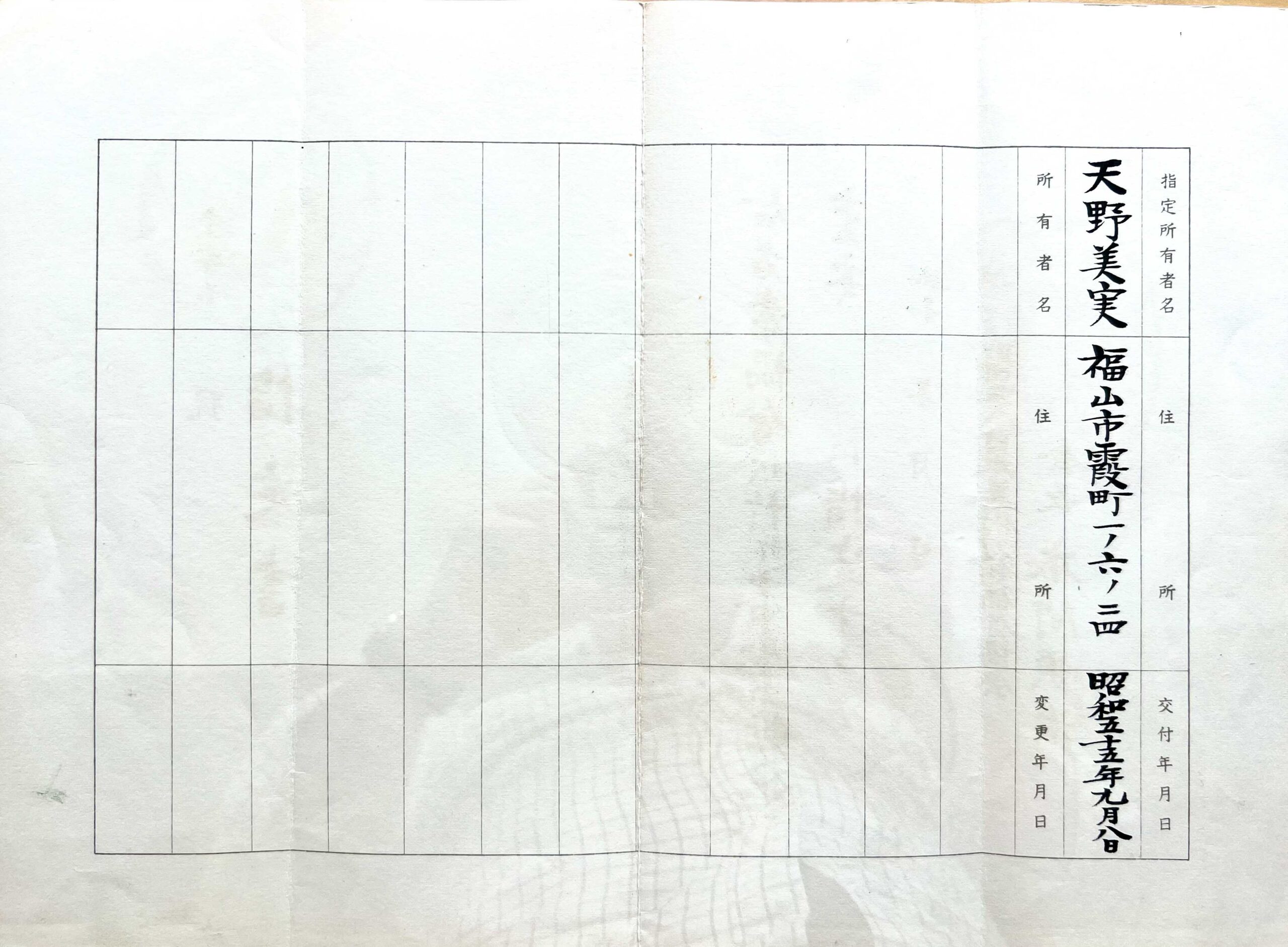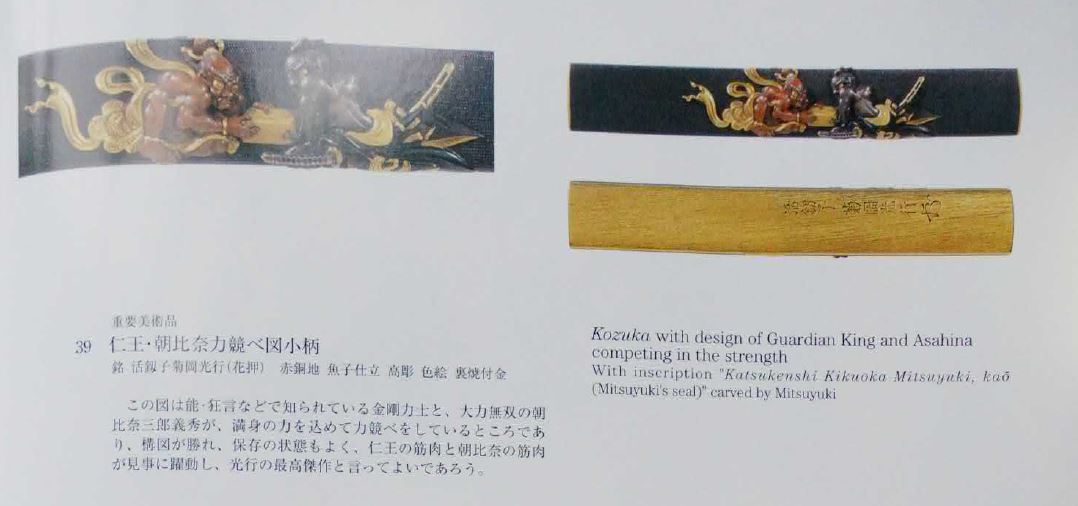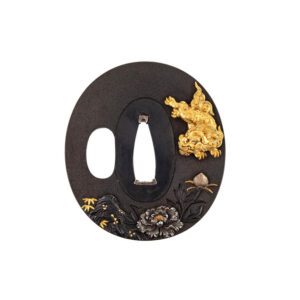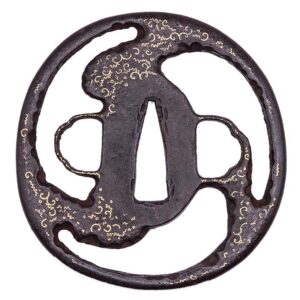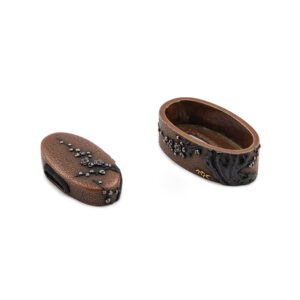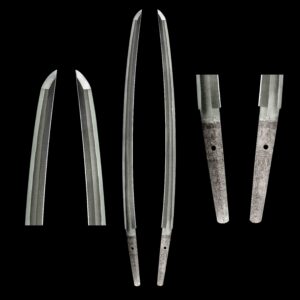Without doubt Kikuoka Mitsuyuki, the founder of the Kikuoka school ranks among the best Kodogu artists of all times. He was not only a master craftsman of sword fittings but a poet as well. His father and his grandfather have been famous haiku and waka poets and Mitsuyuki inherited and used their poetic pseudonym ‘Senryo’. Born in the third year of Kan’en (1750) in Edo he assumed the leadership of the family in his thirties not only as a poet but also as a Kinko craftsman. He is regarded as the best student of Yanagawa Naomitsu the second generation of the Yanagawa school after Yanagawa Naomasa. He used ‘kakkenshi’, ‘dokuhosai’, ‘saikaan’, ‘suiminsha’, ‘minsoken’ and ‘nansensai’ as his go. The former (kakkenshi) is found on this very Kozuka. He died at the age of 51 in the tenth month of the twelfth year of Kansei (1800).
His work style carries on the splendour of Yokoya Somin’s and Yanagawa Naomasa’s work and is regarded as more meticulous and detailed than his masters. His speciality was the depiction of naturalistic figurative designs and the expressive depiction of the human body, which we can very well see in this Kozuka.
The design of this Kozuka shows a guardian king ‘Nio’ (on the left) and Asahina Yoshihide (on the right) in a competition of strength which is a tug of war, pulling a cubic wooden log. Asahina was the third son of Wada Yoshimori who was the first ranking Samurai of the Kamakura Shogunate in the 13th century, his mother being Tomoe Gozen a renowned femail warrior. Growing up in Asaina-gun in the province of Awa he started calling himself ‘Asahina’. It is believed that Yoshihide was a historic figure but legends rank around his abnormal strength which, as we can see in this Kozuka was thought to be equal to that of a Nio.
While the Nio is showing his full musculus body, Asahina has pulled down his Kimono to expose his torso, his embroidered Hakama waving behind him, at his side a Tachi with a Mokkou-Gata Tsuba.
It is to be noted that there exists a twin to this Kozuka with almost the exact same design (see last two pictures), which has been attributed the rank of Juyo Bijutsuhin. While the other piece has Yasurime engravings on the back, this Kozuka shows a polished back surface. Also we can see very fine engravings on the golden attire of the Nio while he left the same area blank on the Juyo Bijutsuhin. Whatever the small differences, both these Kozuka are regarded as the finest examples of Mitsuyuki’s work.
Mitsuyuki used copper to sculpt the body of the Nio and Shibuichi for Asahina, both their eyes added in gold. Asahina’s traditional headwear and his hair are made from Shakudo. The Kimono is made from Shakudo as well decorated with golden inlaid Mon and highlights. The Tsuka of his Tachi is meticulously inlaid in silver while the Saya is Shakudo and the fittings are gold. The Base of the Kozuka is Shakudo and the front and sides are covered with perfect fine Nanako. The polished back is gold.
This piece exhibits the best quality to be found in Japanese Kodogu works and would stand among the top-class items of any distinguished collection.
Signed ‘Kakkenshi Kikuoka Mitsuyuki (Kao)’
Attributed as Juyo Tosogu by the NBTHK in Showa 55 ku gatsu hachi nichi (8th September 1980)
Two custom made boxes have been specifically made for this Kozuka, the outer one made from Kiri and the inner one made from the very rare old Japanese Cedar (Jindai Sugi) which is said to be thousand to several thousand years old and only found buried in lake beds or marshes.


